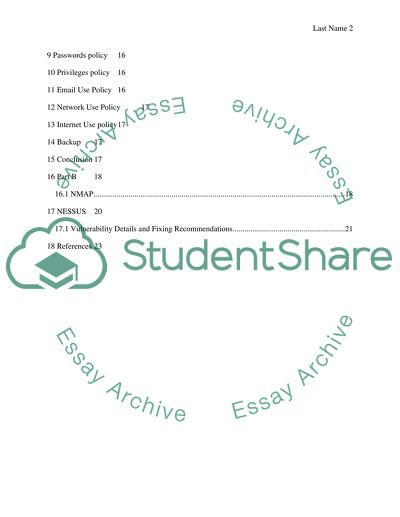Cite this document
(“Systems Security/Ethical Hacking Essay Example | Topics and Well Written Essays - 3000 words”, n.d.)
Systems Security/Ethical Hacking Essay Example | Topics and Well Written Essays - 3000 words. Retrieved from https://studentshare.org/information-technology/1403752-systems-security-ethical-hacking
Systems Security/Ethical Hacking Essay Example | Topics and Well Written Essays - 3000 words. Retrieved from https://studentshare.org/information-technology/1403752-systems-security-ethical-hacking
(Systems Security/Ethical Hacking Essay Example | Topics and Well Written Essays - 3000 Words)
Systems Security/Ethical Hacking Essay Example | Topics and Well Written Essays - 3000 Words. https://studentshare.org/information-technology/1403752-systems-security-ethical-hacking.
Systems Security/Ethical Hacking Essay Example | Topics and Well Written Essays - 3000 Words. https://studentshare.org/information-technology/1403752-systems-security-ethical-hacking.
“Systems Security/Ethical Hacking Essay Example | Topics and Well Written Essays - 3000 Words”, n.d. https://studentshare.org/information-technology/1403752-systems-security-ethical-hacking.


